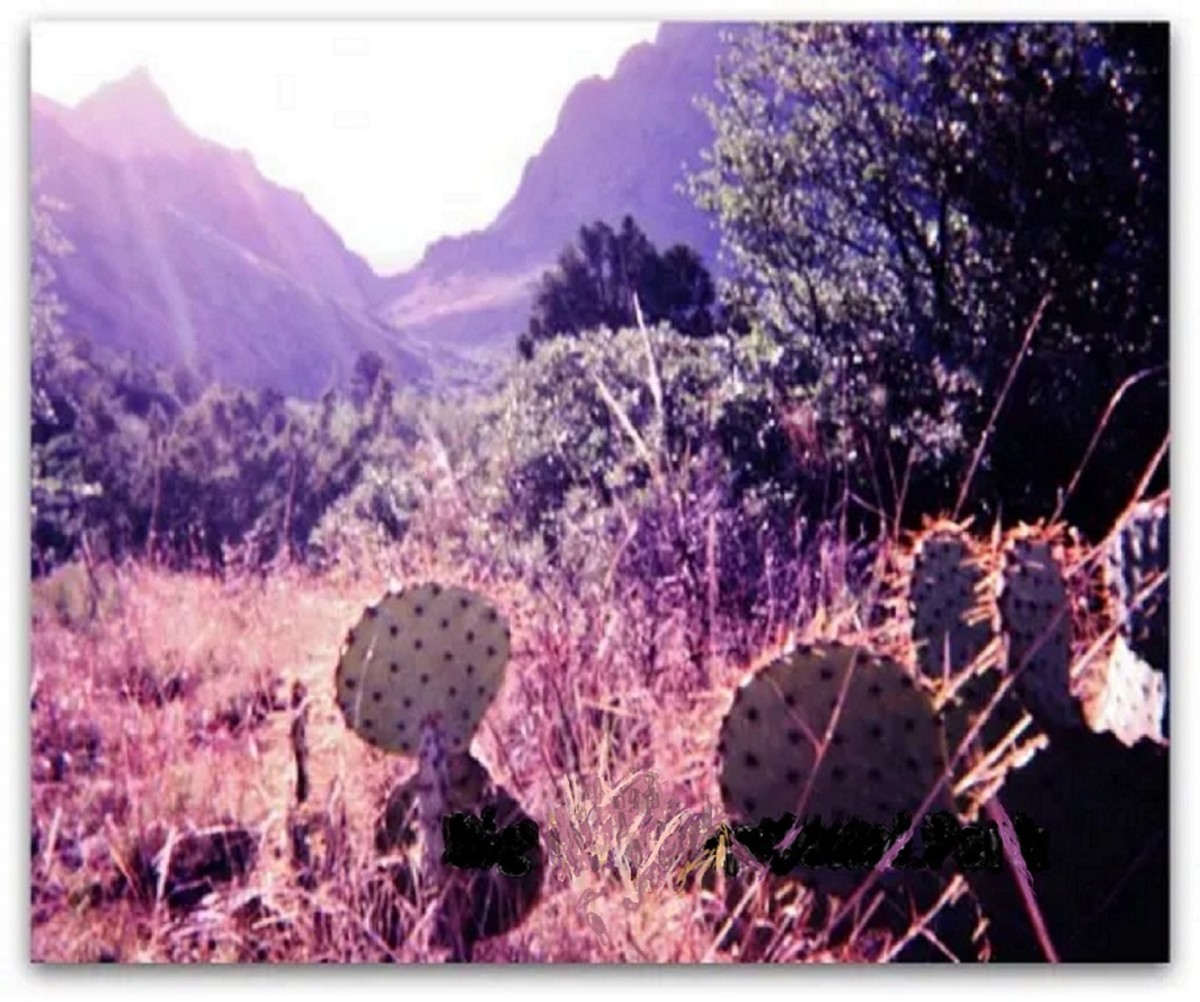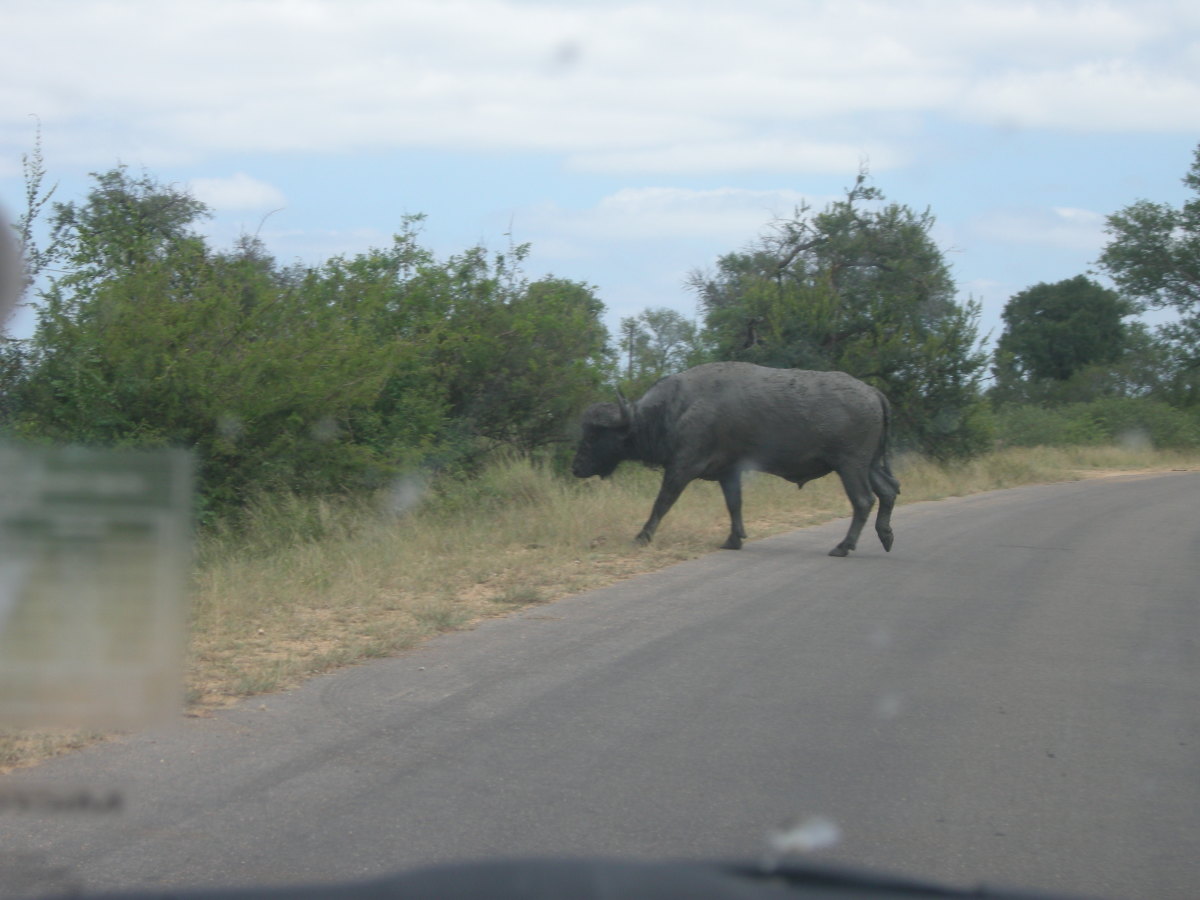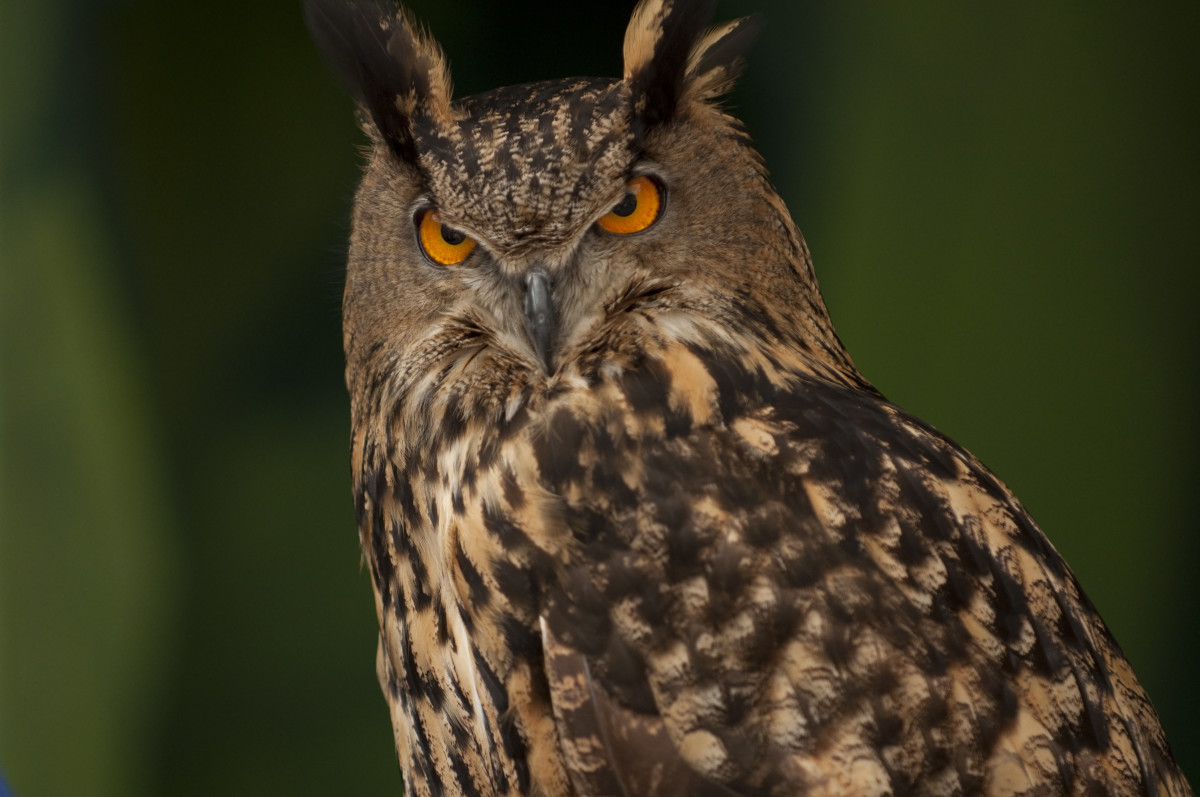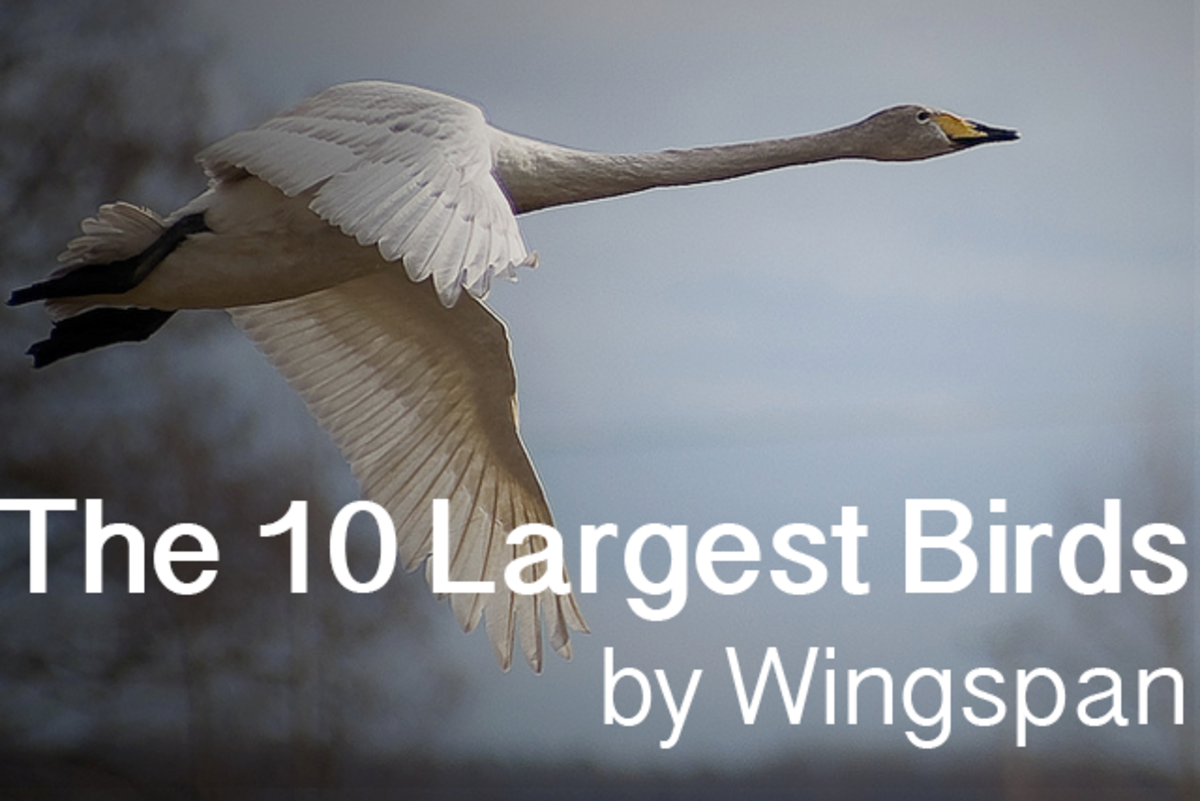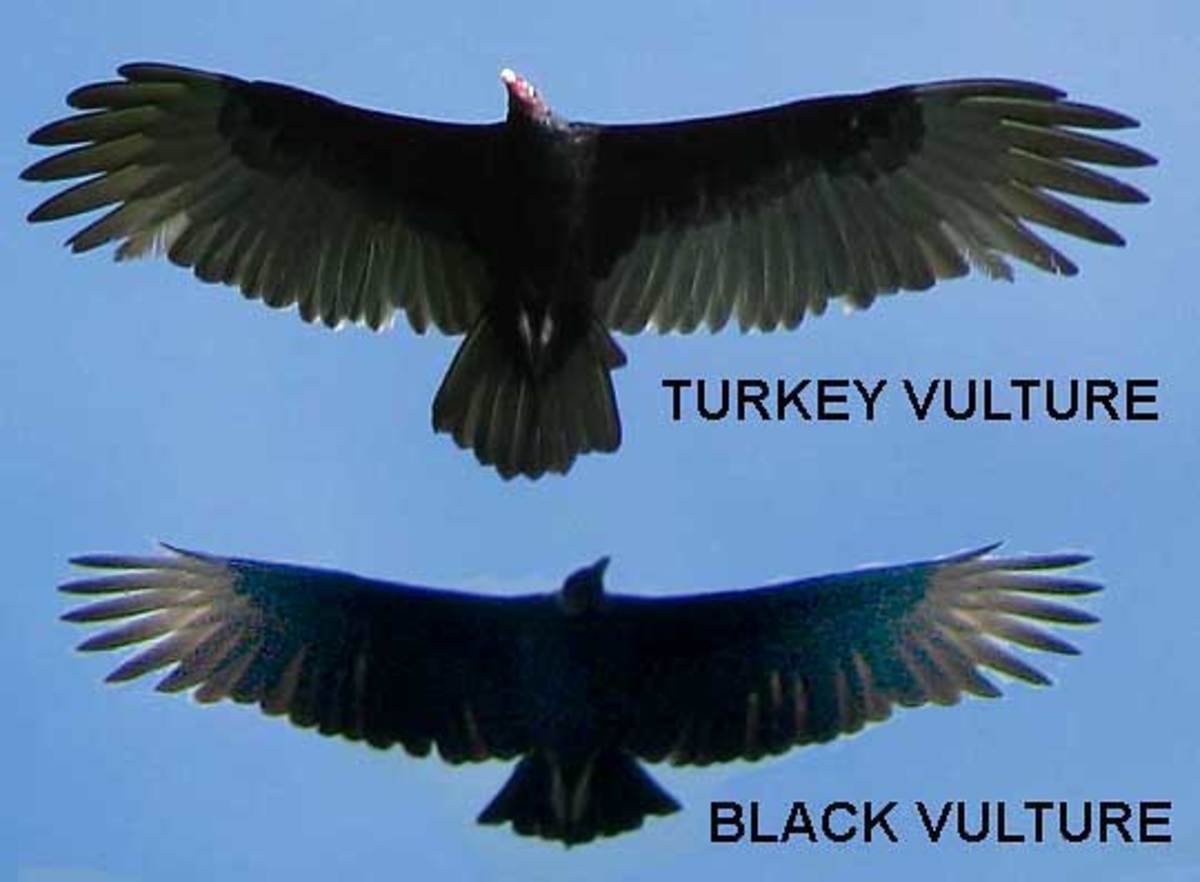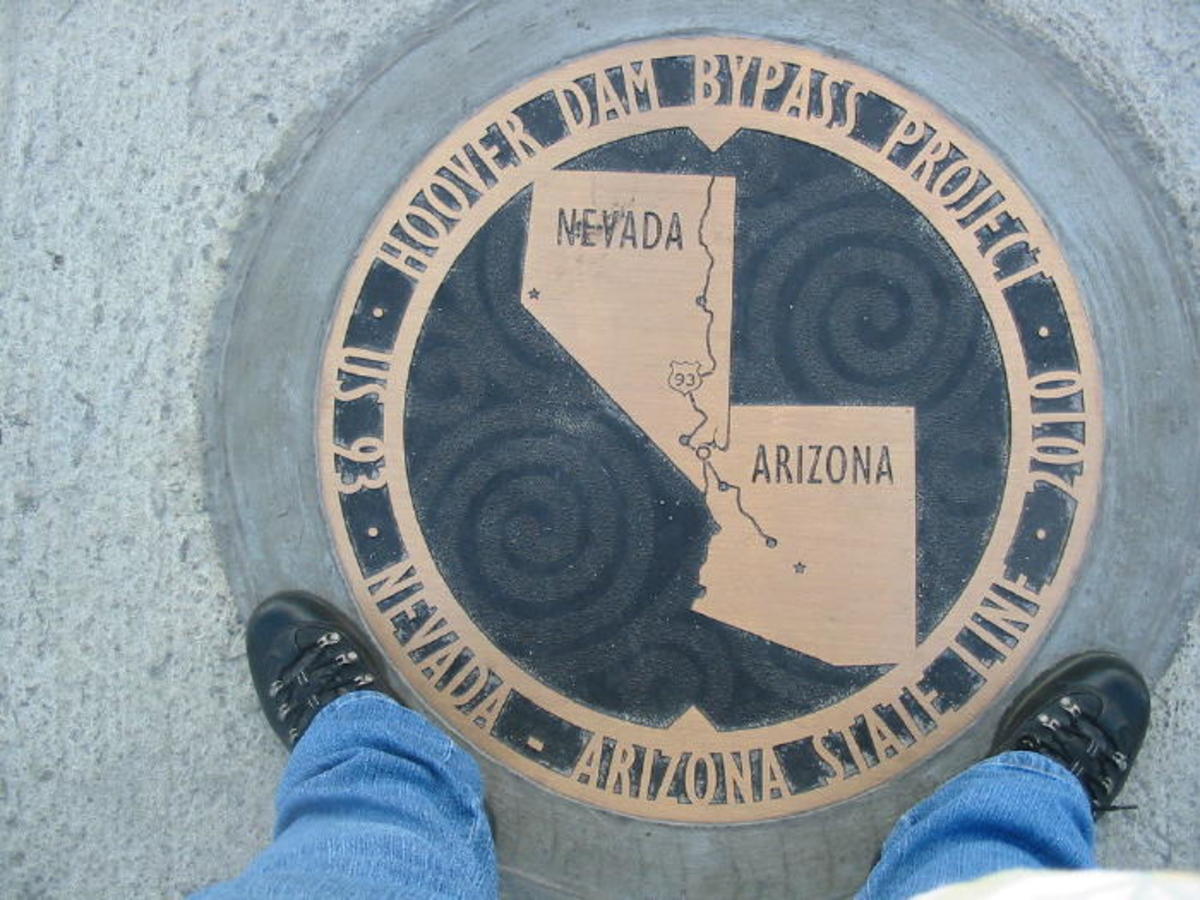The Kruger National Park: The Big 6 Birds
The Big 6 Birds
-
The Big 6 Birds represent the birds that visitors to Kruger National Park and other national parks most likely want to see. These large birds are easily recognizable to even the novice birder.
- These 6 birds have made the selection to the Big 6 Birds for exactly the reason stated: they are large birds and of the largest of their species. They are in no particular order:
1. The Kori Bustard
The Kori Bustard is the largest flying bird in Africa, and the male of the species is more often than not twice the size of the female. They prefer to dwell and feed on the ground but can, of course, also take off.
- Food: They are omnivores, and their diet consists of insects such as locusts and grasshoppers, but also grasses and seeds.
- Habitat: The habitat of the Kori Bustard is open grassy areas with sandy soil and low rainfall.
- Habits: Up to 70% of time is spent on land, so it is clear that they do not like flying overly much. They like sun and dust bathing, as this is a means of cleaning up.
- Status: This is a scarce bird that is listed on CITES Appendix II. They are expected to decline by roughly 10% over the next three generations.
The Kori Bastard
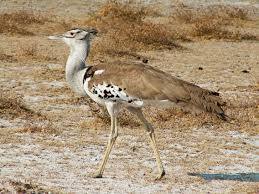
2. Martial Eagle
The martial eagle is the largest of its kind in Africa. Have a look at these impressive measurements:
- Weight: 6–13 lb.
- Length: 31-38 in
- Wingspan: 6 ft.–8 ft.
- Tail 10–12 in
- Tarsus 3-5 in
- Wing chords 22–26 in
The martial eagle is an apex predator, meaning that it is at the top of the food chain. It feeds on:
- Birds
- Reptiles
- Mammals like hares, mongooses, baboons, monkeys, and small impalas.
- Caracal and Jackal
- Domestic livestock such as poultry and lamb
- Habitat: The Martial Eagle can be found in woodland edges, open woods, thorn bush areas, and savannahs. They nest in trees and would therefore not occur in areas without trees.
- Habits: They hunt in flight and then swoop down on prey once it has been spotted. They can be seen circling before diving down on their prey.
- Status: This bird has a low productive rate and needs large areas to hunt in; as such, it is a scarce species. In 2009, it was listed as near-threatened and in 2013 as vulnerable.
3. Lapped-faced vulture
The lapped-faced vulture is a solitary creature and also goes by the name Nubian vulture. This is a huge specimen of vulture with probably the largest and longest wings compared to others of its kind.
- Food: Carrion of every sort and description
- Habitat: Their preference is for open mountain slopes or dry savannah. You can also find them in deserts, arid plains, and thornbush; it is clear that they like wide open spaces. With the advent of road kills, the vulture has found a new food source.
- Habits: The Lapped-Faced Vulture is a scavenger, and it spots animal carcasses by watching other vultures when they are circling above a kill. Their aggressiveness means that others of their kind will make way when they appear.
- Status: These vultures are declining for various reasons. One is the fact of human occupation and the destruction of their natural habitat; another reason is that they die after they have consumed poisoned livestock. As such, they are seen as vulnerable, and their population worldwide stands at less than 9000.
Lapped-faced Vultures and Jackal
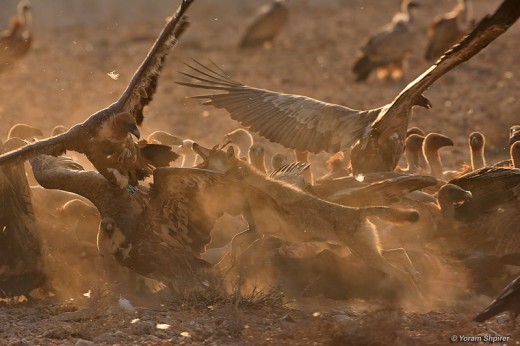
4. Pel's Fishing Owl
Pel's Fishing Owl is one of the largest owls in the world, and like the others of its species, it is a nocturnal bird. It weighs about 4-5 lb. and has a length of 20–25 in; the males and females are similar in size and coloring.
- Food: frogs and fish
- Habitat: Pel's Fishing Owls like to live in forests, along rivers, lakes, estuaries, and swamps. They favor riverine forests where there are large trees where they roost during the day. They are resident birds; in other words, they do not move from one place to another with the changing of seasons. They do, however, move further afield when looking for prey.
- Habits: They are vocal on moonlit nights and then especially near dawn. They eat almost exclusively fish with weights ranging from 3.5 oz. to about 4.4 lb. These owls perch on a branch over the river and then swoop down to catch their prey. They then fly back to the branch to feed.
- Status: The population seems to be stable at present as long as they can find habitats along large water sources in conjunction with large trees and a good supply of fish.
Pel's Fishing Owl
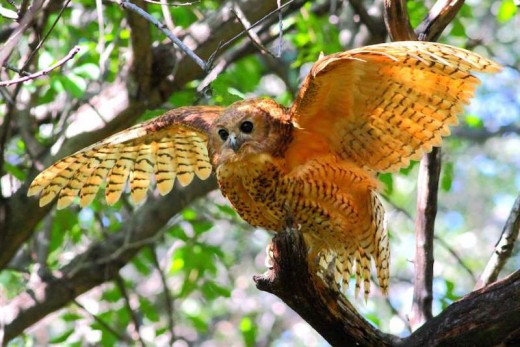
5. Saddle-billed stork
The bird is a wader and once again it is one of the largest of its kind with the male heavier than the female. It also has exceptionally tall legs.
- Food:
- Fish
- Crabs
- Frogs
- Small birds
- Reptiles
- Habitat: The stork is found in large parts of Africa and they need flood lands or forested water lands to breed. Trees are needed for the building of a deep and stick like nest.
- Habits: The Saddle-billed Stork is a silent bird; the only time when you will hear it make a sound is when they clatter their bills when nesting. They fly with an outstretched neck and the drooping bill is distinctive for bird watchers.
- Status: They do not seem to be a threatened species.
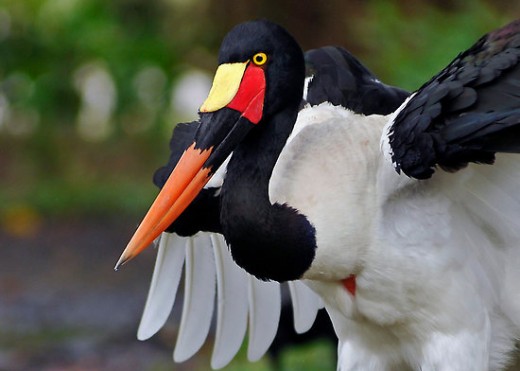
6. Southern Ground Hornbill
This large bird is between 35 and 50 inches long, and the males are heavier than the females.
- Food:
- Mammals such as hares
- Insects
- Snails
- Frogs
- Reptiles
- Habitat: These birds spend a lot of time on the ground, as their name indicates. What they need is a savannah where there are large trees so that they can build a nest and raise their young. Short and dense grass is also required for foraging. They mostly occur in national parks, such as Kruger, or otherwise in protected areas like game reserves.
- Habits: They are highly vocal in groups; these groups consist of between 5 and 10 individuals. This bird is a cooperative breeder, and there are more than the original two birds caring for the young. It seems that the bird needs 6 years as a helper breeder before it can breed on its own.
- Status: The need for agricultural land has reduced the specific and preferred habitat for the Southern Ground Hornbill. Furthermore, its productive rate is low. This has changed the bird's classification from Vulnerable to Extinction, however, in South Africa, it is already on the Critically Endangered list.
A Hornbill in the KRUGER NATIONAL PARK
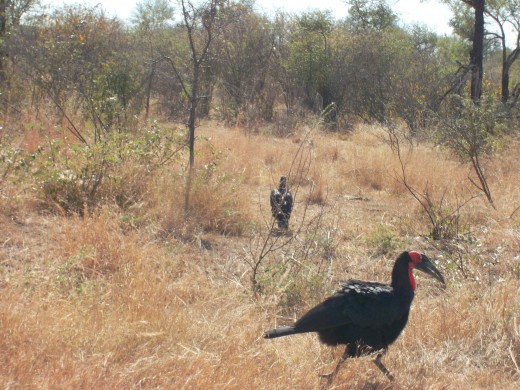
- South Africa National Parks - SANParks - Official Website - Accommodation, Activities, Prices, Reser
Official Website. Experience the beauty and diversity of South African National Parks, Travel and explore South Africa! Nature Conservation, Accommodation, Activities, Reservations
What do you prefer?
This content is accurate and true to the best of the author’s knowledge and is not meant to substitute for formal and individualized advice from a qualified professional.
© 2014 Esmé


